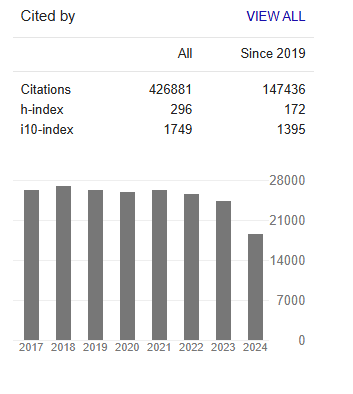Yttria Stabilized Zirconia Thin Film Electrolyte for Low-Temperature Solid Oxide Fuel Cells Using Sol-Gel Dip Coating Method
Abstract
Muhammad Bura Garba, Muhammad Rosnita and N. F. Zakaria
This research investigates the development and analysis of Yttria Stabilized Zirconia (YSZ) thin film electrolytes for low-temperature Solid Oxide Fuel Cells (LT-SOFCs) using the solgel dip coating method. YSZ is valued for its high ionic conductivity and thermal stability, which are vital for SOFC operation at reduced temperatures. The sol-gel dip coating technique offers a versatile and cost-effective approach to control film thickness and microstructure. In this study, YSZ thin films are synthesized by varying precursor concentrations, coating period and annealing temperatures to optimize film properties. Structural analysis using X-ray diffraction (XRD) confirms the formation of the crystalline phase while Scanning electron microscopy (SEM) reveals a uniform and dense microstructure. Results indicate that films with higher precursor concentrations, 4 g and longer coating periods, 15 min show increased surface roughness and porosity. Atomic force microscopy (AFM) measurements reveal roughness values ranging from 57.5 nm to 172.0 nm for 4 g precursor solutions, while 2 g solutions exhibit roughness between 80.3 nm and 238.8 nm. SEM images show denser but more porous films with longer coating periods, which could affect the mechanical and electrical properties. Contact angle measurements indicate nucleation follows the Frank-van der Merwe growth mechanism, with angles ranging from 200 to 800 depending on growth conditions.




